Google algorithm updates 2021 in review: Core updates, product reviews, page experience and beyond
Google had a busy year of search algorithm updates in 2021, but some might question the timing of many of those updates during an already super stressful year.
From an SEO perspective, 2021 can be summed up as stressful — not just because of several algorithmic updates throughout the year but also possibly because of the timing of some of those updates. With the COVID vaccine rollout, some businesses began returning to normal, but then the Delta and Omicron variant threw everything for a loop — was it just too much to handle for some?
It may have been a bit too much to handle for Google as well: The search engine launched Page Experience update late, never hit its deadline for the mobile-first indexing this year and seemed to rush out two late. big algorithmic updates towards the end of the year.
RELATED: SEO 2021 in review: Endless updates, title rewrites, GMB becomes GBP and more
Google’s June, July and November core updates rocked the SEO industry
June 2021 core update. Google took a while to release its first core update of the year, the June 2021 core update, which began rolling out on June 2, 2021. That update finished rolling out about ten days after it started, on June 12, 2021. This core update seemed to have been a slow rollout that had a bunch of mixed results based on the data given to us by several data providers.
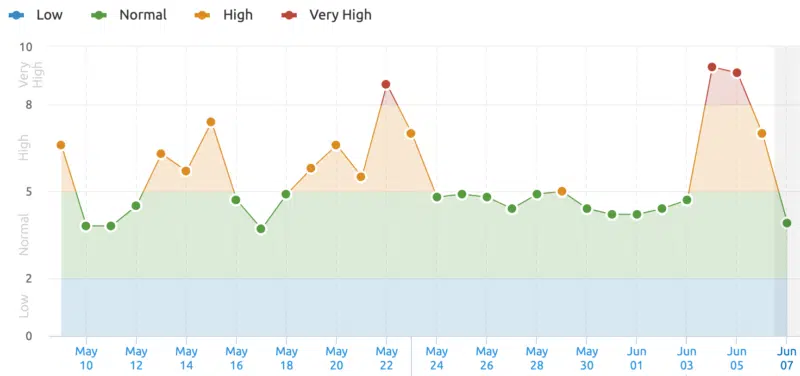
July 2021 core update. Shortly after the June core update, Google released the July 2021 core update on July 1, 2021 — this was kind of like part two of the previous June core update. This update took about 12 days to roll out, completing on July 12, 2021. Unlike the June core update, the July core update was fast to roll out according to the data providers.
November 2021 core update. Then several months later, Google hit us with the November 2021 core update, that started right before the big holiday shopping season on November 17, 2021. That update rolled out through Thanksgiving, Black Friday and Cyber Monday and completed on November 30, 2021, 13 days after it started. The November core update hit hard and quickly according to the data but many SEOs felt blindsided by the timing of that update.
well, they did do one around this time last year as well but at least it was after black friday https://t.co/VYypG5bHpj
— Sarah (she/her) (@SarahBlocksidge) November 17, 2021
Google’s April and December product reviews updates were new to SEOs
Not only did we have three core updates in 2021, we also had two product reviews updates. The product reviews update was a new kind of update, focused on content written around products and making sure Google only ranked the best and most useful product reviews in the search results.
April 2021 product reviews update. Google’s first product reviews update touched down on April 8, 2021. Google made a point to tell us this is not a core update and only impacted English content, but much of the same recovery advice reflected that of a core update. Google effectively finished rolling out that update on April 22, 2021, but there may have been some edge case tremors later, so it took approximately two weeks to rollout. That update was a big update but not as big as a typical core update, said the data providers.
December 2021 product reviews update. If the first product reviews update in April wasn’t enough, Google ran a second product reviews update named the December 2021 product reviews update that started on December 1, 2021. That update took about three weeks to rollout, and completed just days before the Christmas holiday, on around December 21, 2021.
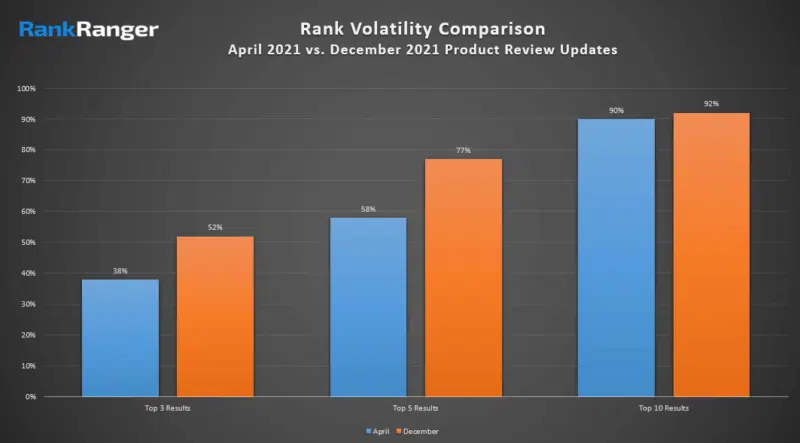
The update felt bigger than the April product reviews update, according to the data providers. Of course, timing a product reviews update three weeks before Christmas might also put Google into the category of being out of touch with the e-commerce ecosystem.
Google’s spam and link spam updates provided some transparency for SEOs
Google also released a few spam related search algorithms updates, which Google was upfront and transparent about in terms of timing but, for obvious reasons, didn’t give too much technical detail on.
June 23, 2021 spam update. Google released a spam update on June 23, 2021, which began and finished on the same day. It was a 24-hour update target spam efforts in Google Search.
June 28, 2021 spam update. Then the following week, Google released part two, the June 28 spam update. That update also started and finished on the same day, a 24-hour roll out.
July 2021 link spam update. The following month, Google released a July link spam update that started on July 26, 2021. Google said that rollout would be done in about two weeks but it was completed after about four-weeks, two weeks longer than expected. The rollout finished on August 24, 2021 and target spammy links that tried to manipulate the Google search results.
Google’s page experience update was a bit delayed but went live
Google postponed the launch of the page experience update by a couple of months, but it did go live on June 15, 2021. That rollout took a long time — it rolled out for a few months and finished rolling out around September 2, 2021. As a reminder, you should not have seen huge ranking changes in Google Search for this release. This was a slow rollout and Google originally advised not to expect drastic changes.
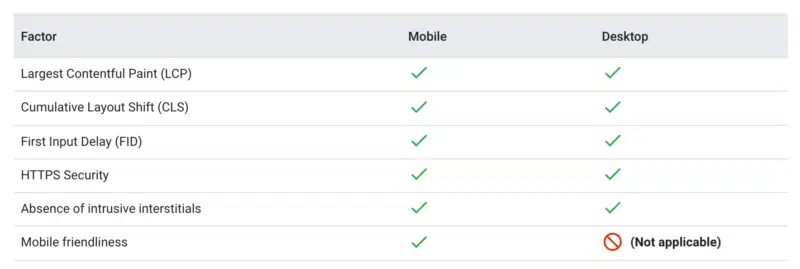
Google did say that next year, in February 2022, the page experience update will be brought to desktop search.
Google’s local update in November
Not to be outdone by the web search algorithmic updates, Google also confirmed after the rollout was complete that it performed a local search update in late November. That update started on November 30, 2021, and ran through December 8, 2021.
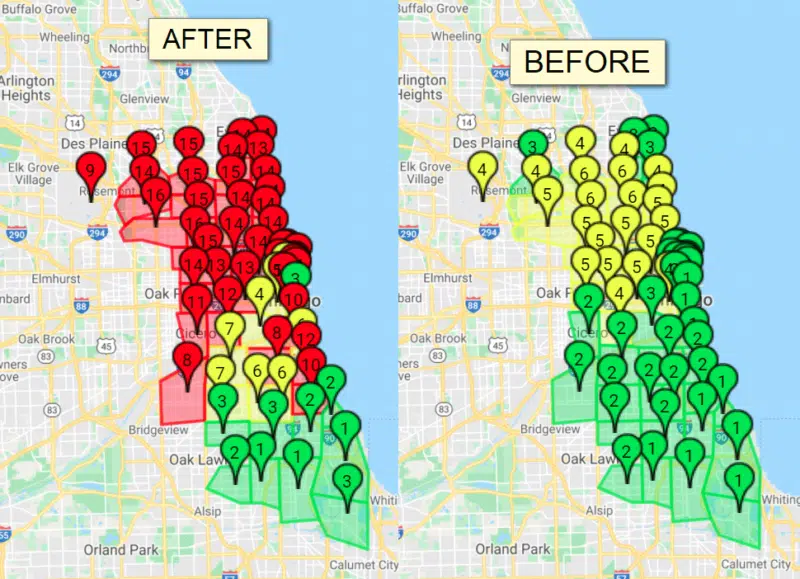
This update seemed to focus on proximity factors and was code-named the Vicinity Update by the local SEO community.
MUM, passage ranking and subtopics
Passage ranking. Google spoke about passage ranking in 2020 but it wasn’t until February 2021 where Google actually started to use passage ranking. Passage ranking is a way of Google ranking specific passages from a web page in search; it is not a visual update to the search results but a ranking update.
MUM. Google also showcased MUM, Multitask Unified Model, which is 1,000 times more powerful than BERT.
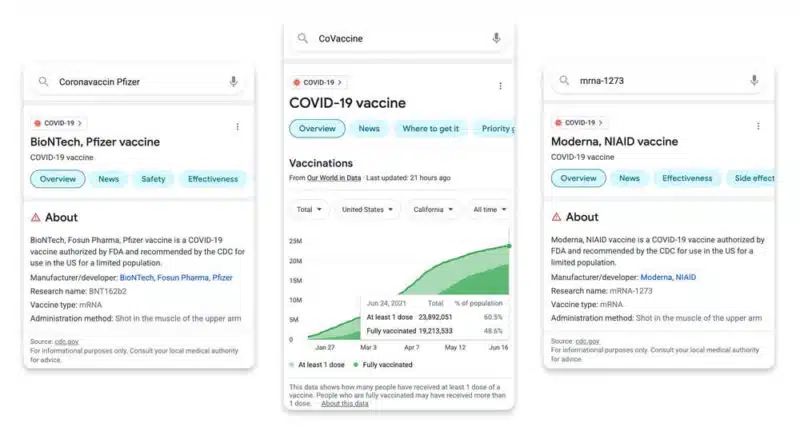
It was first used this year for understanding the hundreds of variations of COVID vaccine names. Google has lots of ambitious plans for MUM in Google Search and beyond and has already expanded its use cases later in 2021.
Sub-topics. Google launched another AI-based ranking system named sub-topics rankings in November 2020. But Google didn’t tell us it went live until 2021 came around.
Mobile-first indexing delayed again
Google’s mobile-first indexing initiative, which started in 2016, was delayed again and scheduled to be completed in March 2021. Google decided to do away with the deadline this year and said this will get done when it gets done. So, if your site has not moved over yet to mobile-first indexing yet, hopefully sometime in 2022 it will be but Google won’t be giving us any more timelines on this initiative.
Other Google algorithm changes, updates, tweaks or topics
It has been a busy year. Google confirmed in 2020 that it released over 4,500 changes to search. I suspect that number will be higher for the 2021 year.
Google also released a predator update, as I like to call it, that demoted libelous content within its search results.
The company also released an image search update in February that reduced duplicate images in its image search results.
Google’s title tag changes caused a stir in the SEO industry. The company confirmed after the change went live that it made changes to the title snippet and what Google uses to show the title snippet. It also explained why it made the changes and a month or so later, made some tweaks to that title snippet algorithm.

Finally, data has shown that the Google search results were more volatile this year than all previous years. SEOs have been working hard with all these changes and there has been more awareness around work-life balance in this space.
I’d expect more to come in 2022, so hopefully, this crazy busy 2021 prepared you for it.
Catch up on the biggest PPC news of the year or zoom out to see how 2020 unfolded for the SEO industry:
Related stories
New on Search Engine Land